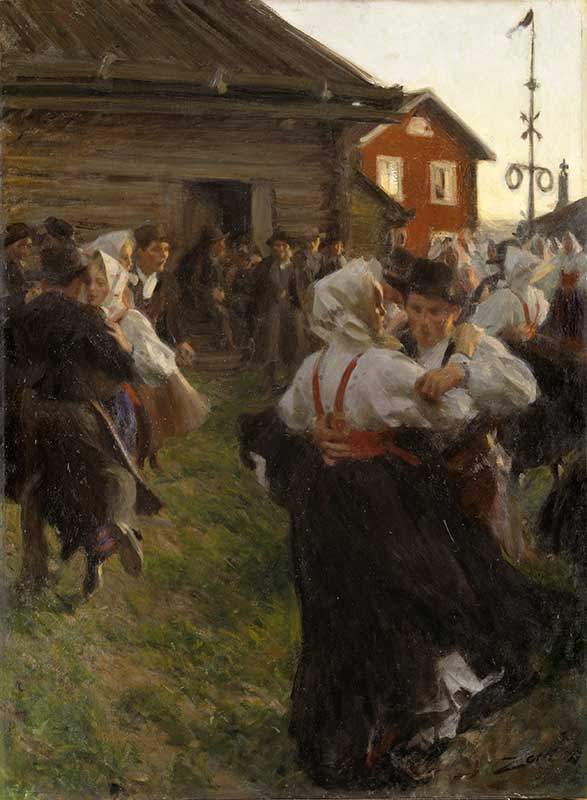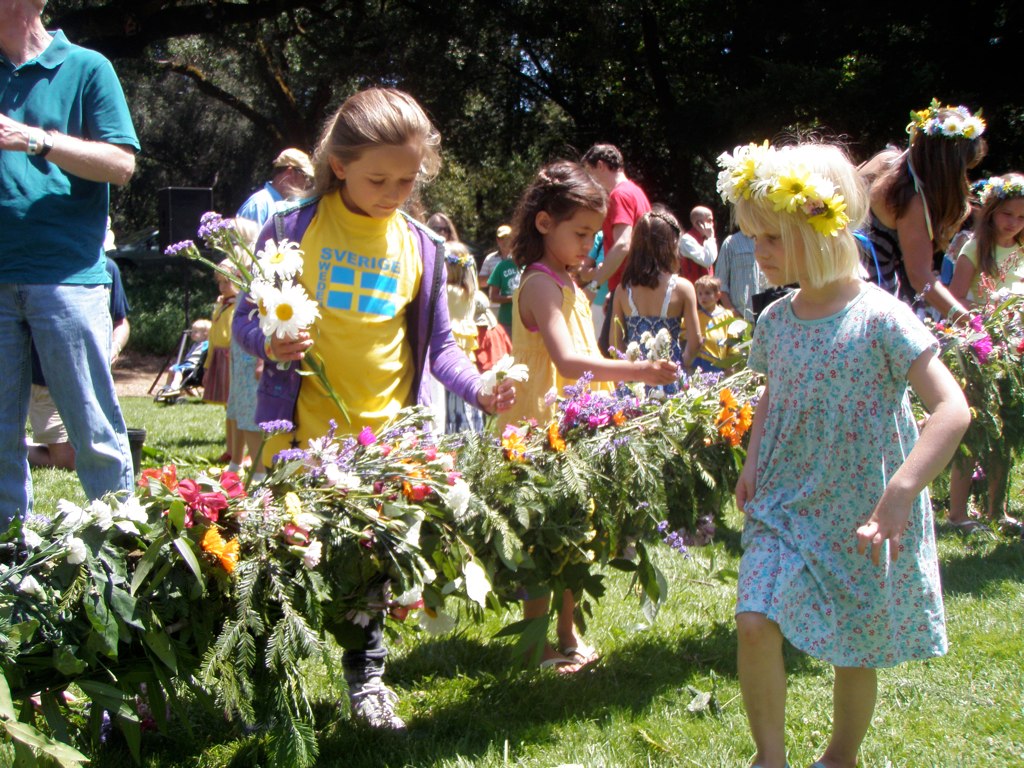Homeward Bound: Celebrating the Summer Solstice in America
...an emotional journey to the Sweden we remember, the Sweden we long for, the Sweden of our imagination...
-
 Anders Zorn, Midsummer Dance, 1897. Oil on canvas. Photo: Nationalmuseum, Stockholm.
Anders Zorn, Midsummer Dance, 1897. Oil on canvas. Photo: Nationalmuseum, Stockholm. -
-
In a country that endures long, cold and dark winters, it is no surprise that one of the highlights of the year coincides with the longest day of the year. On Midsummer, when nights are light and the hopes are high, Swedes gather in what may appear to be — at least to the foreign eye — rather perplexing ceremonies. With roots in pagan festivals of the sun and peasant customs, Swedish Midsummer rituals symbolize the end of arduous times and the beginning of play. Nothing can keep the sun-loving Swedes from outdoor festivities on this day, enjoying al fresco dining and dancing “the little frog dance” around the maypole in all but the chilliest, most inclement weather. Drizzling rain, clouds of mosquitos and near-freezing temperatures are no impediment.
-
 Sveadal is located near Morgan Hill, California in the eastern Santa Cruz Mountains.
Sveadal is located near Morgan Hill, California in the eastern Santa Cruz Mountains. -
-
Swedish Midsummer celebrates transition — the seasonal moment of harvest time, the exit of darkness and the entrance of light. This is a time to drink and be merry, a heathen time; a time for madness and enchantment, for romance and frivolity; a mythical magical time. This cultural folk tradition has so long been closely connected with the Scandinavian country's identity that Midsummer’s Eve has been proposed to replace June 6 as the National Day. On Midsummer's Eve, many Swedes feel a great desire to return to their roots. So strong was Swedish master painter Anders Zorn's desire to return to Sweden for Midsummer's Eve that he turned down an especially lucrative commission to paint John D. Rockefeller when in America. Swedish Midsummer was simply more important to him than painting the American oil magnate.
-
 Kids decorating a maypole Midsummer 2011. Photo by Michael Bray
Kids decorating a maypole Midsummer 2011. Photo by Michael Bray -
The Midsummer celebration takes on added meaning for those Swedes who find themselves far away from home. In the United States, Swedish-Americans and Swedish expatriates turn to Midsummer as a means of communing with loved ones across the Atlantic. The festivities are a way of embarking on an emotional journey back to the Sweden they remember, the Sweden they long for, the Sweden of their imagination. Midsummer fills the same deep need for the Swedish expatriate as dancing tango might for the emigrated Argentine, or singing fado might for the Portuguese away from home. The traditional Swedish dances and songs carry expatriated Swedes along sweet roads of nostalgia to Sweden and to home, if only for a day.
-
In California, where there is little reason to get overly excited by the sight of the sun, Midsummer is nevertheless celebrated as the epitome of all things Swedish. We are fortunate that Sveadal Midsummer has now for over a century continued to recreate this idyllic Swedish tradition for the Swedish-American community here in the San Francisco Bay Area. On June 21, the Swedish-American Chamber of Commerce (SACC) cordially invites everyone Swedish or Swedish at heart to a Midsummer picnic at Sveadal. Enjoy a carefree day with friends and family, dance around the maypole, and sing and feast on delicious traditional Midsummer nibbles. The Sveadal Midsummer celebration commences at 10 a.m. as the children decorate the maypole and families peruse the vendors’ market. The SACC Midsummer Picnic begins at 11 a.m. by reserved tables.
-
Happy Midsummer!
Sofia Englund -
More on Sveadal: Midsummer beams on Sveadal and its history: Sveadal Property Search Committee 1926
-
Event Info
SACC Midsummer Picnic
11 a.m. to 1:30 p.m. at Sveadal
Sveadal, 8220 Croy Road, Morgan Hill, CA 95037 -
Free of Charge
Picnic RSVP required and purchase of Sveadal Admission Ticket required.
RSVP for SACC Picnic & Buy Sveadal Admission Ticket -
-
